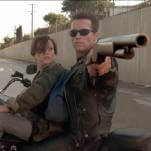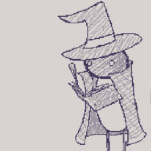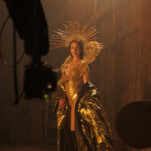Pop culture can be as forbidding as it is inviting, particularly in areas that invite geeky obsession: The more devotion a genre or series or subculture inspires, the easier it is for the uninitiated to feel like they’re on the outside looking in. But geeks aren’t born; they’re made. And sometimes it only takes the right starting point to bring newbies into various intimidatingly vast obsessions. Gateways To Geekery is our regular attempt to help those who want to be enthralled, but aren’t sure where to start. Want advice? Suggest future Gateways To Geekery topics by emailing [email protected].
Geek obsession: Bob Mould
Why it’s daunting: As one-third of Hüsker Dü, leader of Sugar, and a prolific solo artist, Bob Mould has a long discography that spans three decades—and includes some of the most important work of the punk and alternative-rock eras. Rightly hailed as one of the truly innovative bands of the ’80s, Hüsker Dü began life as a speed-addled hardcore band but found itself when it grew more melodic, and the resulting sound heavily influenced the alternative-rock scene that followed in its wake. (Mould was on a short list of potential producers for Nirvana’s Nevermind.) But more than 25 years of intraband and band-vs.-label acrimony have prevented the Hüsker Dü catalog from receiving the loving reissue treatment it deserves. While the albums remain in print, Hüsker Dü’s sound changes so drastically between 1982’s Land Speed Record and 1987’s Warehouse: Songs And Stories that it can be difficult to know where to begin.
Pull back to look at Mould’s career altogether, and the choice becomes more difficult. On opposite ends of the spectrum: the quiet, mostly acoustic Workbook from 1989 and the heavily electronic rock of 2002’s Modulate. In between are the three albums Sugar released between 1992 and 1994, the post-Sugar sound of 1996’s Bob Mould, the heavily produced bleakness of 1990’s Black Sheets Of Rain, and several other solo albums that follow Mould’s fractious relationship with the sound he pioneered. He planned to abandon guitar rock after 1998’s The Last Dog And Pony Show (which led to Modulate and an all-electronic album under the anagram moniker LoudBomb), but returned to it on 2005’s Body Of Song. Mould’s discography doesn’t have any straight-up terrible albums, but some are friendlier than others to newcomers.
Potential gateway: Copper Blue/Beaster reissue (2012)
Why: This year marks the 20th anniversary of Copper Blue, Sugar’s first album and Bob Mould’s commercial peak. To commemorate the occasion, Merge is reissuing the remastered Sugar discography, combining Copper Blue and the 1993 EP Beaster into a three-disc set with a previously unreleased live recording. (The label also released a two-disc version of 1994’s File Under: Easy Listening, with a live-show recording that had a limited release previously.) Each reissue features extensive liner notes with oral histories of the albums, photos, press clippings, flyers, and other memorabilia.
Mould gets the most attention for Hüsker Dü, so the expectation might be to start with one of the band’s albums, like Flip Your Wig or New Day Rising (both excellent choices). While Hüsker Dü may feature some of Mould’s finest moments, the band wasn’t his singular vision. He shared songwriting duties with vocalist/drummer Grant Hart (and, in the early days, even bassist Greg Norton), so listeners might be better off with a mixlist of Mould songs from Hüsker Dü than a full album for the purposes of Gateways To Geekery.
Moreover, a whole generation of listeners became aware of Mould through Sugar. Hüsker Dü disintegrated a few years before alternative rock became a force commercially, and Copper Blue hit at the right time: September 4, 1992, a little less than a year after Nevermind. “With the success of Nevermind, Nirvana had come through and plowed the snow out of the way, I guess, so that we could get through,” Mould says in Copper Blue’s liner notes. “Things were right, the time was right. Copper Blue was the right record.”
As the product of Mould’s singular vision—he’d written all the songs alone and originally intended for Copper Blue to be his third solo album—and the perfect synthesis of the guitar-rock sound that would become his signature, Copper Blue and Beaster make for the best introduction into Mould’s music. Although released separately, both albums were written and recorded at the same time.
“I didn’t know it going in, but we were actually making two very distinct records at the same time,” Mould writes in his memoir, See A Little Light: The Trail Of Rage And Melody. “I was plowing through the songs and the fluff was starting to fall to the side. I relegated about a dozen songs to B-side or outtake status, leaving me with a 10-song pop album and a six-song suite with a heavier feel.”
In the Sugar catalogue, Copper Blue gets most of the attention, because it was the first and contains the lion’s share of Sugar’s best-loved songs. A few of them arrive before the album even reaches its second half: “Changes,” “Helpless,” “Hoover Dam.” It’s a damn near perfect album, with a first half that’s almost untouchable—though the second song, “A Good Idea,” always seemed like a weird fit. It veers into moodier territory right after “The Act We Act,” which perfectly showcases the way Mould lets his verses simmer before exploding into hooky, melodic choruses. Maybe it’s just how “A Good Idea” begins, with David Barbe’s bass, the sound of bubbling water, and a guitar that sort of sounds like it’s mooing. The song gradually builds into something resembling the rest of Copper Blue’s first half, and the songs that follow—“Changes,” “Helpless,” and “Hoover Dam”—all segue into each other.
Copper Blue’s reputation for lightness and Beaster’s for darkness are both true, but a bit overstated. The specter of AIDS haunts “The Slim,” which precedes the album’s poppiest song, “If I Can’t Change Your Mind,” and the paralysis of “Slick” (about the aftermath of a car accident) shows Copper Blue wasn’t all sunshine. Sadness lurks under many of the album’s bright melodies, too. “Changes” addresses a relationship that has reached a critical decision point about its future (“I want something like I remember / and I want something that lasts forever / I remember times you said / that you’d be true to me / Look at how the weather’s changing”), and “Helpless” continues the theme—it’s right there in both songs’ titles.
For its part, Beaster isn’t all bleakness. While “Tilted” and “JC Auto” are absolutely ferocious—on par with some of Hüsker Dü’s aggression—“Come Around,” “Feeling Better,” and “Walking Away” offer a few moments of light. Beaster has also become the dark horse in the Sugar catalogue over the years. “More than just Copper Blue’s Dark Twin, this six-song suite is possibly Bob Mould’s definitive work,” says the introduction of Beaster’s liner notes.
That’s too narrow; the Copper Blue/Beaster sessions are really Mould’s definitive work, and bundling them proves that point unequivocally. It also enhances Copper Blue, finally uniting it with “Needle Hits E,” a song too good to be relegated to a B-side. (Mould mentions it by name in the File Under: Easy Listening liner notes when he says, “Sometimes during my compiling, it made me wonder why certain songs weren’t on the albums.”) The moody slow-burner “Try Again” is also a nice addition, though all the bonus tracks were previously available on B-sides compilation Besides.
All of the tracks benefit from Jim Wilson’s remastering, which not only makes the songs sound meatier but also corrects a Dolby error from the original albums that over-emphasized the right channel. “If you thought that record made your head bob before, now it’s like being in a whole room of people with brain injuries,” Wilson writes in the liner notes.
Recorded in Chicago, a city that’s been a second hometown for Mould over the years, the live disc shows Sugar in its prime. The band would usually play about 45 minutes of the upbeat songs, switch to the more acoustic ones for a while, then close with Beaster. “Spiritually, those final 30 minutes were a loose approximation of Hell,” Mould writes in See A Little Light. Maybe that’s why this set goes a little easier, sprinkling in covers of “Armenia City In The Sky” and “Dum Dum Boys” with the Beaster songs and closing with Copper Blue’s “Man On The Moon.”
Next steps: Well, that depends. To continue the Sugar sound, try 1996’s Bob Mould, made after Sugar had broken up but still very much in line with what the band did. But it’s probably best to work back from Sugar: The restrained, quiet, and mostly acoustic Workbook was a startling departure for Mould following the intensity of Hüsker Dü, but going quiet suited him well. Coming from Sugar, the best Hüsker Dü album to start with is 1985’s Flip Your Wig, as a straight line from Copper Blue can be drawn to songs like “Makes No Sense At All,” “Hate Paper Doll,” the title track, and “Divide And Conquer.” (The album also has some of Grant Hart’s best work.)
Where not to start: Although its reputation is more toxic than its reality, 2002’s Modulate is only for advanced studies. By the end of the ’90s, Mould had grown weary of the guitar rock he pioneered, and his recent discovery of electronic music inspired him to try something new. “I was just excited about working with a new set of tools,” Mould writes in See A Little Light. “I had already written ‘Wishing Well’ [from Workbook], why would I write it again?” Mould has incorporated elements of electronics in just about every album he’s released over the past decade, but they dominate Modulate. The album landed with a thud. It’s worth hearing as a stylistic experiment, and it has good moments, but new fans would be better off digging through the rest of his work first.








































